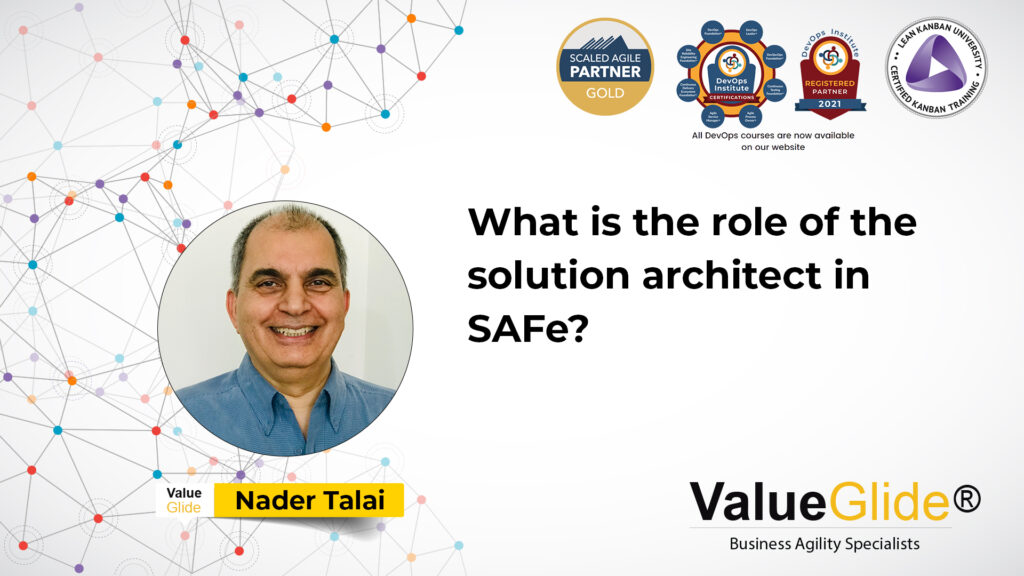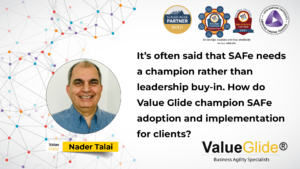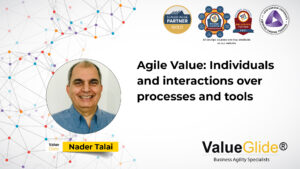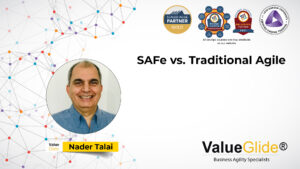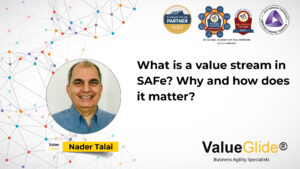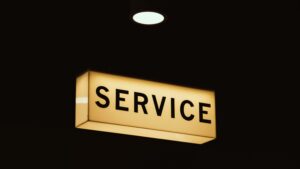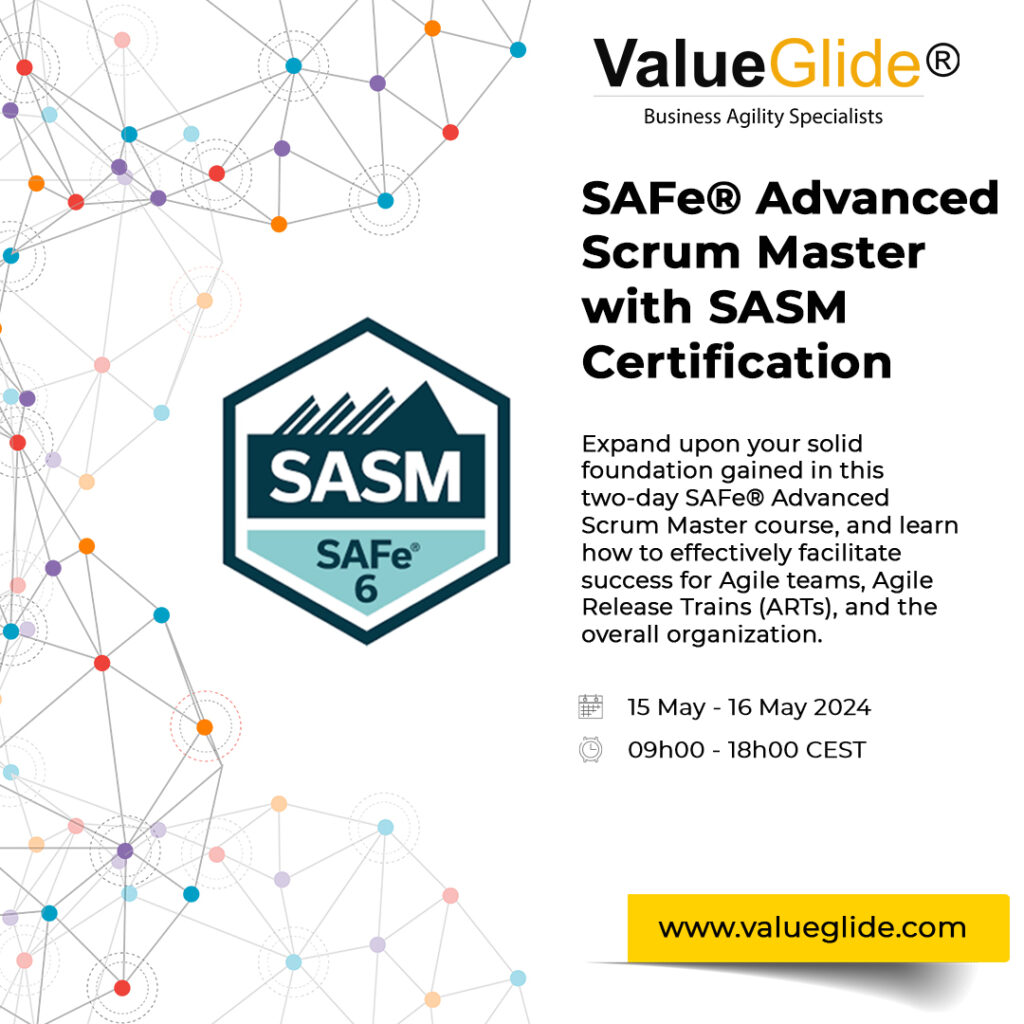What is the role of the solution architect in SAFe?
SAFe or Scaled Agile Framework has three (3) architect roles:
- Enterprise Architect
- Solution Architect
- System Architect
These three (3) roles capture the entire organizational IT architecture.
- Information architecture
- Security architecture
- Application architecture
And so forth.
Everything you can think of in terms of software, hardware, and operational architecture that supports the creation, capture, and delivery of value to customers. All this architecture maps to one of these three (3) primary architect roles in SAFe.
Quick overview of the Architect Roles
Enterprise Architect
The enterprise architect has a broad, but not necessarily deep, knowledge of all the solutions within the portfolio.
Solution Architect
The solution architect is responsible for the solution within the SAFe environment. This encompasses all of the Agile Release Trains that are coordinated and aligned with delivering a specific solution to a customer or value stream.
So, the solution architect will have a deeper understanding of the solution architecture than the enterprise architecture, but they won’t have the same breadth of knowledge as the enterprise architect.
They understand how all the dots connect across all the Agile Release Trains committed to building or delivering a solution to the customer.
System Architect
A system architect has deep knowledge about the solution that the Agile Release Train is building.
So, each Agile Release Train builds a specific solution for a specific customer or value stream, and the system architect has deep knowledge and capability of each solution being developed or delivered.
Architect Capabilities
In the SAFe environment, the knowledge and capability of each architect moves from broad and shallow to narrow and deep, as you move through each role. The enterprise architect would have the greatest breadth of knowledge about the environment, whilst the system architect would have the greatest depth of knowledge and capability within the SAFe environment.
Teams of Architects
In some environments, especially for a small organization, a single architect in each capacity would be fine. In larger, more complex organizations, you would have several system architects, solution architects, and enterprise architects.
It isn’t a single person responsible for all of these elements, the volume of work and depth of complexity makes it almost impossible for a single person to manage, so we do have teams of architects within the SAFe environment to make sure we have capacity and capability to deliver continuous, valuable work to customers.
Active, hands-on service to the teams.
None of the architect roles are ivory tower roles.
They don’t sit in a corner office and distribute plans and blueprints for others to observe, they are instead a hands-on, integrated part of the Agile Release Trains and act in service of the customer, the organization, and the teams of agile teams.
They are an integral part of the agile release train, the solution train, and part of the portfolio.
Each of the architects are continually guiding individuals and teams, gaining a deeper understanding of how the architecture and product road-mapping integrate into a solution, and intervene when there is a mismatch between a product vision and an implementation requirement.
They are actively learning and adapting as they gather more evidence and data.
Nothing is cast in stone in a SAFe environment, and just as the teams adapt and respond based on what they are learning, so too do the architects adapt and respond based on what they are learning.
In the design and planning phase of solution architecture, we may think that X is achievable, however, as the work flows through the value stream, we may notice that X is no longer achievable and we either need to adapt, or we need to amend the architecture to facilitate X being achieved.
So, the architects serve the customers, the organization, and the agile release trains in a hands-on, agile manner that aligns with agile values and principles, as well as SAFe values and principles.
About Value Glide
Value Glide are a SAFe (Scaled Agile Framework) consultancy, coaching practice, and training specialist who work with organizations to align business objectives with customer needs and wants.
As deeply experienced agile coaches and practitioners, our team are invested in continuous learning through each client engagement and use the data and evidence we gather from each implementation to inform our training, coaching, and consulting services.
In a nutshell, empirical process control or empiricism.
If you are thinking of adopting agile within your organization and have identified SAFe as a great agile framework to adopt, implement and improve your business agility, visit our SAFe Quickstart ART Launch program page or view our SAFe Consulting Services page.
If you have identified a need for an agile coach and SAFe coach to help your organization adopt and implement SAFe, visit our SAFe Coaching Services page.
If you want to know more about SAFe and how to lead SAFe, visit our SAFE Training page for a host of options, from Leading SAFe to a SAFe Release Train Engineer course.
#SAFe #scaledagileframework #scalingagile #agile #agileframework #agilecoach

